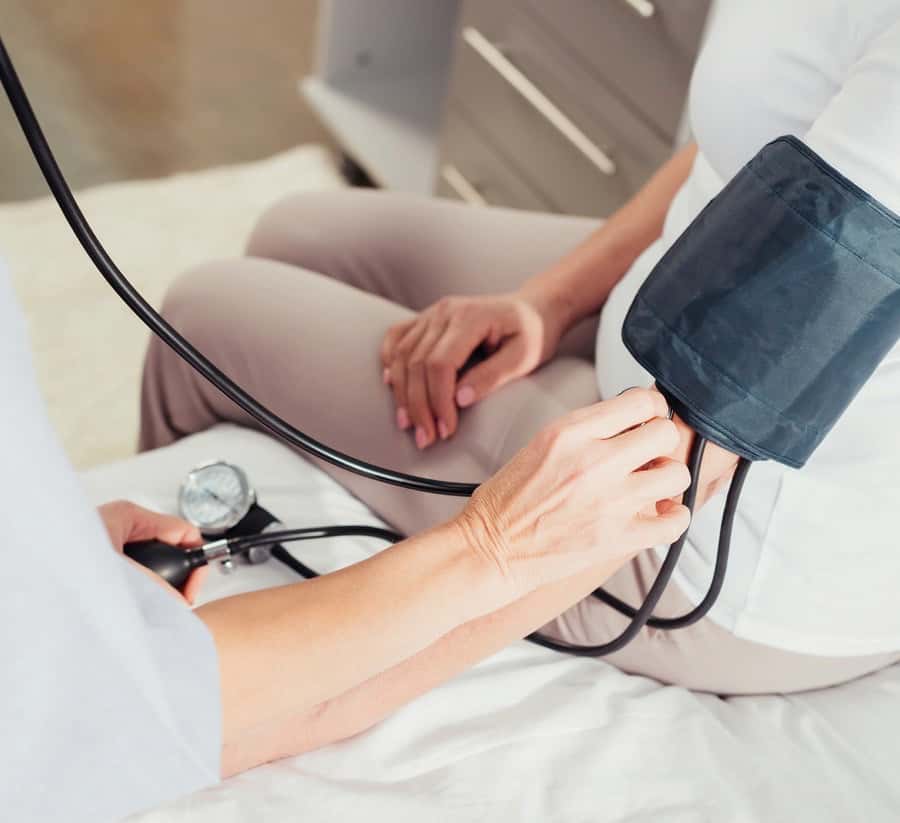
High blood pressure is a condition that makes people more vulnerable to complications such as heart attacks, strokes and even bad outcomes from infections such as COVID-19. Unfortunately, an analysis published in JAMA reveals that an increasing proportion of Americans now have uncontrolled hypertension (JAMA, online, Sept. 9, 2020).
How Do Scientists Define Uncontrolled Hypertension?
Data on 18,262 patients with high blood pressure were collected through the National Health and Nutrition Examination Survey (NHANES) in 2013 and 2014 and again in 2017 and 18. The investigators considered that blood pressure was under control if the top number (systolic pressure) was under 140 and the bottom number (diastolic pressure) was under 90.
At the beginning of the decade, only 32 percent of NHANES participants with elevated blood pressure had it under control. By 2007 and 2008, that proportion was up to 48.5 percent. Again, in the 2013-14 sample, 54 percent of people with high blood pressure had it under control. Four years later, that rate had dropped to 44 percent. Alarmingly, that figure implies that more than half of blood pressure patients–56 percent–had uncontrolled hypertension.
People who had health insurance, a primary care provider and a regular health care “home” were more likely to have their blood pressure below 140/90. Current guidelines set the limits of controlled blood pressure at 130 over 80. Applying that more stringent criteria means even fewer patients have their blood pressure where it should be. Older individuals and people of color may have particular challenges in this regard.
What Else Should You Do About Your Blood Pressure?
The authors of the study in JAMA cite lack of information about diet and lifestyle as a limitation of the study. Nonetheless, most experts agree that people can gain better control if they quit smoking, monitor their blood pressure at home and adopt nondrug approaches such as exercise and diet in addition to taking medication. In addition, those with persistent uncontrolled hypertension may need more than one type of medicine to lower it.
Help Ahead for Uncontrolled Hypertension:
A possible new treatment for uncontrolled hypertension has cardiologists excited. It works through a completely new pathway. When people can’t get high blood pressure under control, it’s called treatment-resistant hypertension.
A study in the New England Journal of Medicine showed that the investigational new medicine, lorundrostat, lowers systolic pressure by about 15 points (NEJM, May 8, 2025). The 285 participants in this study had blood pressure readings of 130/80 or higher even though they were taking at least two and as many as five medications for hypertension. People in the placebo arm lowered their systolic blood pressure by 7 points. All patients in the study were also on standard blood pressure treatment.
The new medication works through the hormone aldosterone, which is important in the control of blood pressure. One potential complication of the medicine is elevated potassium levels, which can be dangerous. Lorundrostat is still investigational, so doctors cannot yet prescribe it for patients. Experts hope that when they can, this drug will prevent cardiovascular complications and slow the progression of chronic kidney disease as well as improve blood pressure control (Current Opinion in Nephrology and Hypertension, May 1, 2025).
We will let you know if the FDA approves the use of lorundrostat. The agency approved the blood pressure pill Tryvio in 2024,
Learn More:
We have summarized information on antihypertensive medications and nondrug approaches in our eGuide to Blood Pressure Solutions. This online resource includes discussion of white coat hypertension, home blood pressure monitors and the DASH diet, along with summaries of information on ACE inhibitors, ARBs, beta blockers, calcium channel blockers and diuretics.
Citations
- Muntner P et al, "Trends in blood pressure control among US adults with hypertension, 1999-2000 to 2017-2018." JAMA, online, Sept. 9, 2020. doi:10.1001/jama.2020.14545
- Laffin LJ et al, "Lorundrostat efficacy and safety in patients with uncontrolled hypertension." New England Journal of Medicine, May 8, 2025. DOI: 10.1056/NEJMoa2501440
- Helmeczi W & Hundemer GL, "Targeting aldosterone to improve cardiorenal outcomes: from nonsteroidal mineralocorticoid receptor antagonists to aldosterone synthase inhibitors." Current Opinion in Nephrology and Hypertension, May 1, 2025. DOI: 10.1097/MNH.0000000000001067

